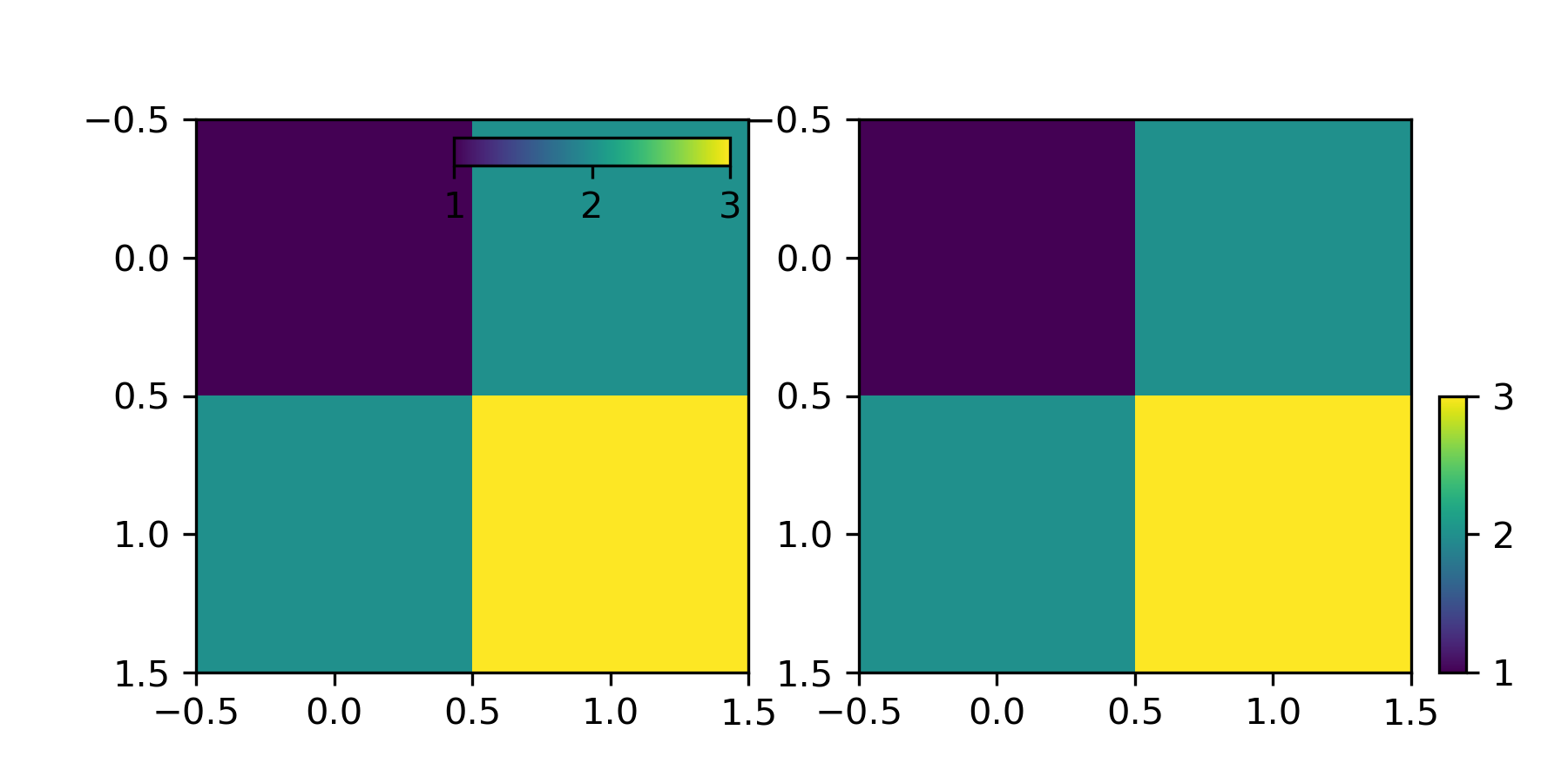>>> """
==============================================================
Controlling the position and size of colorbars with Inset Axes
==============================================================
This example shows how to control the position, height, and width of
colorbars using `~mpl_toolkits.axes_grid1.inset_locator.inset_axes`.
Controlling the placement of the inset axes is done similarly as that of the
legend: either by providing a location option ("upper right", "best", ...), or
by providing a locator with respect to the parent bbox.
"""
... import matplotlib.pyplot as plt
...
... from mpl_toolkits.axes_grid1.inset_locator import inset_axes
...
... fig, (ax1, ax2) = plt.subplots(1, 2, figsize=[6, 3])
...
... axins1 = inset_axes(ax1,
... width="50%", # width = 50% of parent_bbox width
... height="5%", # height : 5%
... loc='upper right')
...
... im1 = ax1.imshow([[1, 2], [2, 3]])
... fig.colorbar(im1, cax=axins1, orientation="horizontal", ticks=[1, 2, 3])
... axins1.xaxis.set_ticks_position("bottom")
...
... axins = inset_axes(ax2,
... width="5%", # width = 5% of parent_bbox width
... height="50%", # height : 50%
... loc='lower left',
... bbox_to_anchor=(1.05, 0., 1, 1),
... bbox_transform=ax2.transAxes,
... borderpad=0,
... )
...
... # Controlling the placement of the inset axes is basically same as that
... # of the legend. you may want to play with the borderpad value and
... # the bbox_to_anchor coordinate.
...
... im = ax2.imshow([[1, 2], [2, 3]])
... fig.colorbar(im, cax=axins, ticks=[1, 2, 3])
...
... plt.show()
...

